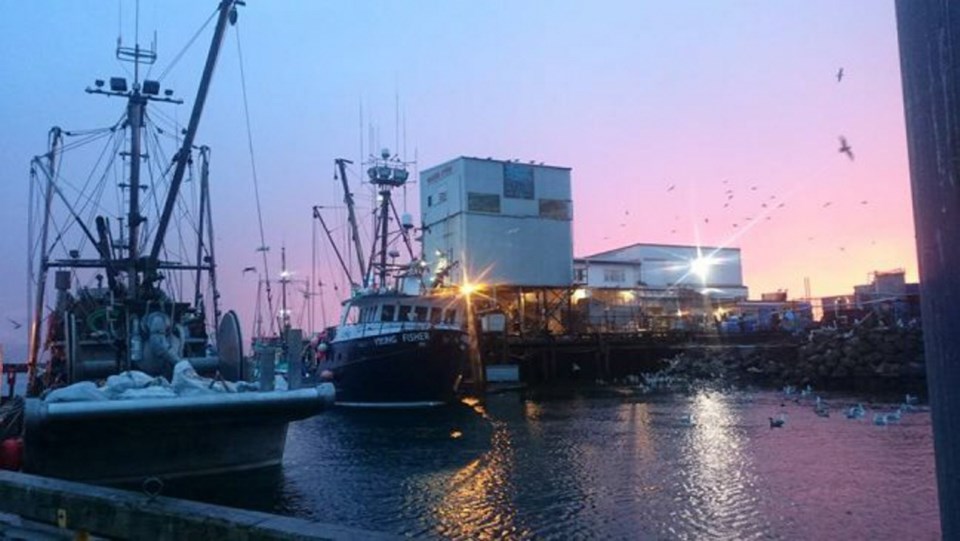The dock at French Creek Seafood has been open around the clock and boats are unloading thousands of tonnes of silvery herring in an abundant year for the Strait of Georgia fishery.
“It will be our record year,” said Tammy Moilliet of French Creek Seafood, about five kilometres north of Parksville. “It’s taxing, but it is exciting.”
French Creek crews have been going flat out since last Thursday at 3 p.m. when the first seiners pulled in. Moilliet co-ordinates the arrivals of the fishing vessels and the loading of trucks, each carrying 20,000 kilograms of herring, heading to eight Vancouver processing plants.
Not only is this year’s herring stock plentiful, but the size of the fish is generally larger and the roe of high quality. The only snag is that Wednesday’s strong winds kept some vessels from the fishing grounds, centred around Baynes Sound.
It’s the golden roe, called kazunoko, that the Japanese market covets.
When a vessel pulls in at the dock, a pump sucks out the herring, sending it onto a conveyor belt, running to totes which are immediately transferred to a semi. The fish can be in Vancouver within hours. Once there, they are frozen to make it easier to pop out the roe in one piece.
A total of 40 workers, split into two crews, are at the dock, Miolliet said.
“We have provided a lot of employment this year. I’ve got a lot of happy staff,” Moilliet said. “Usually this time of year, they are laid off, waiting for our prawn season.”
The company has so far filled close to 100 semi-truck loads.
At French Creek, more than two million pounds of fish caught by seiners has been offloaded. Now it’s the gillnetters’ turn. More than 700,000 kilograms of herring had arrived via gillnetters by Wednesday, and the fishery continues.
B.C.’s commercial herring fishery is worth $10 million in landed value to boats in a good year. Factors include the state of the Japanese economy and quality of fish.
Bill Forbes, of Lasqueti Fishing Co. Ltd., said from Nanoose that plants are paying about $300 per ton, with a possibility of an additional $50 per ton down the road, for seine-caught herring. Gillnetters are commanding about $500 per ton because they can adjust the size of their nets to target larger fish.
This year, a crew member will make about $10,000 for six weeks work off Vancouver Island and Prince Rupert. “It’s not a lot of money,” Forbes said. “At the end of the day, it adds up.” Boats also chase halibut, salmon and prawns.
Forbes praised crews of the Baynes Sound Connector, B.C. Ferries’ new cable ferry running between Buckley Bay on Vancouver Island to Denman Island. “They bent over backwards to accommodate us.”
Brenda Spence, resource manager for Fisheries and Oceans Canada, said of the three areas along B.C.’s coast open for herring at this time, the Strait of Georgia accounts for the vast majority of fishing. The biomass — mature stock which are spawning — forecast in the strait is about 130,000 tonnes this year.
Seine boats in the strait have a total quota of 8,374 tons, and gillnetters are 11,571 tons, Spence said. There are about 40 seine boats and 60 gillnetters in that area this year, plus associated vessels such as packers.
“Stocks in the strait are robust,” and similar to last year, Spence said. They are at levels seen in the early 2000s. She also said the quality is higher this year.
“Herring abundance is really driven by their recruitment from egg to larvae to juvenile fish survival. It’s environmental conditions usually for these small pelagic fish that drive their population fluctuations.” Pelagic fish do not live near the bottom or near the shore.



